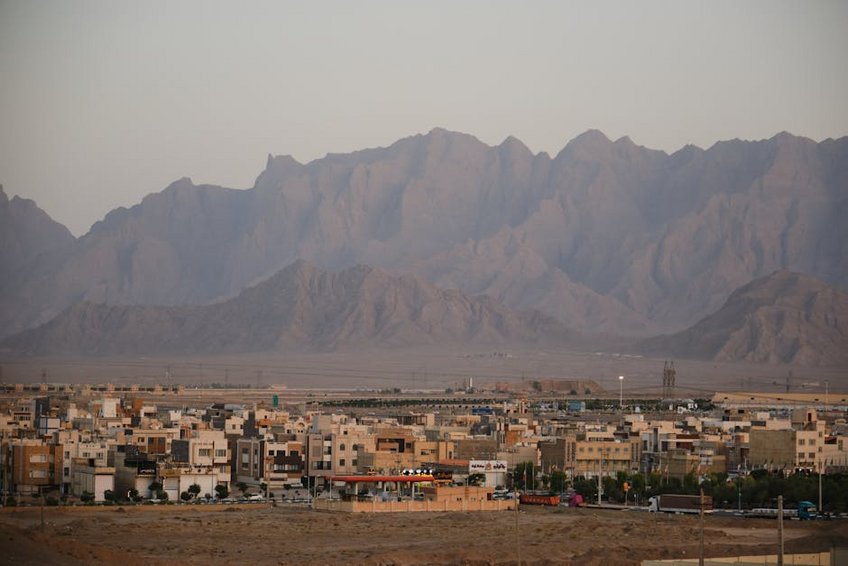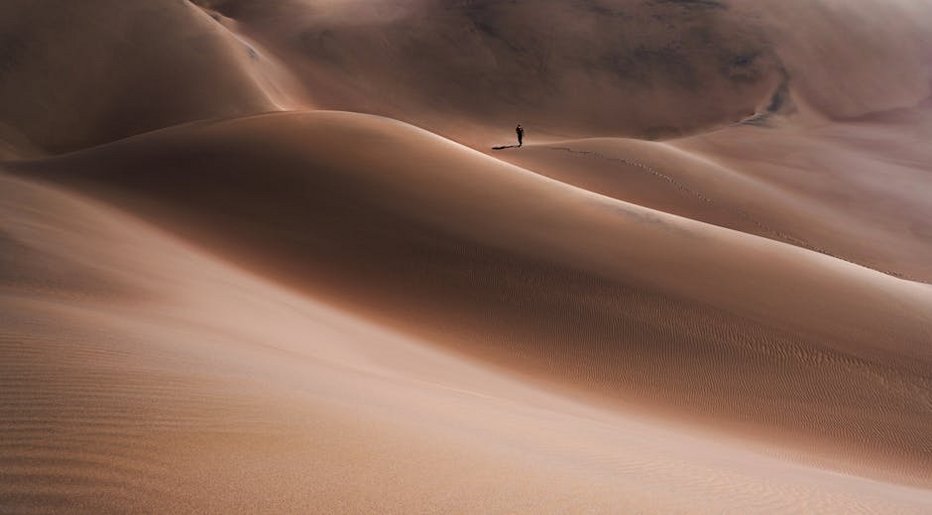Hot Desert Villages of Iran: An Unforgettable Journey into Ancient Persia
Exploring the hot desert villages of Iran offers one of the most authentic and mesmerizing travel experiences you can find in the Middle East. These ancient settlements, often built with distinctive mud-brick architecture, provide a fascinating glimpse into traditional Persian life while surrounded by some of the most dramatic desert landscapes on earth. The hot desert villages of Iran represent centuries of human adaptation to extreme environments, where communities have thrived against all odds through ingenious architectural solutions and sustainable living practices. From the stunning starry nights to the warm hospitality of local residents, visiting these remote destinations feels like stepping back in time while discovering hidden cultural treasures that few international travelers ever experience. The unique combination of natural beauty, historical significance, and cultural authenticity makes the hot desert villages of Iran an absolute must-visit for adventurous travelers seeking something genuinely extraordinary.
Hot Desert Villages of Iran Essential Information – Planning Your Adventure
Before embarking on your journey to Iran’s desert villages, understanding the basic logistics will ensure a smooth and enjoyable experience. The desert regions experience extreme temperature variations, with scorching daytime heat often exceeding 40°C (104°F) in summer months and surprisingly cool nights that can drop below 10°C (50°F). The best time to visit is during the shoulder seasons of spring (March to May) and autumn (September to November) when temperatures are more moderate. You’ll need to arrange your visa in advance, as Iran requires most Western passport holders to obtain authorization before arrival. While English isn’t widely spoken in rural areas, you’ll find that locals are incredibly hospitable and will go out of their way to communicate and assist visitors. The currency is the Iranian Rial, but prices are often quoted in Tomans (1 Toman = 10 Rials), so clarify which currency is being referenced to avoid confusion.
Visa Requirements and Entry Procedures
- Most Western nationals require a visa obtained through Iranian embassies or authorized tour operators
- Your passport must be valid for at least six months beyond your intended stay
- Travel insurance is mandatory and will be checked upon arrival
- Budget travelers can manage with $30-50 daily using public transportation and guesthouses
- Mid-range travelers should budget $80-120 daily for private drivers and comfortable hotels
- Luxury experiences including guided tours and boutique accommodations cost $150-250+ daily
- Iran Tourism Administration Official Site
- UNESCO World Heritage Site Listing for Meymand
- Lonely Planet Iran Travel Guide
Cultural Considerations and Dress Code
Iran maintains conservative dress codes, especially for women, who must wear headscarves and loose-fitting clothing that covers arms and legs. Men should avoid shorts and sleeveless shirts in public areas. Despite these regulations, you’ll find Iranian people remarkably friendly and welcoming to foreign visitors. Religious sites require additional modesty, and photography restrictions may apply in certain areas. Always ask for permission before taking photos of local people, particularly women, as courtesy is highly valued in Persian culture.

Hot Desert Villages of Iran Planning Your Trip – Seasonal Considerations
Strategic planning is essential for enjoying Iran’s desert villages to their fullest potential. The extreme climate dictates that timing your visit carefully can make the difference between an uncomfortable ordeal and a magical experience. Spring brings moderate temperatures and occasional rainfall that transforms the desert landscape with unexpected blooms, while autumn offers clear skies and pleasant conditions ideal for exploration. Summer months should generally be avoided due to intense heat that can make outdoor activities challenging and potentially dangerous without proper preparation. Winter brings cold nights but often pleasant daytime temperatures, though some remote villages may experience limited accessibility during this season. Regardless of when you visit, booking accommodations in advance is highly recommended, especially in smaller villages with limited lodging options.
Best Time to Visit Hot Desert Villages of Iran
The optimal months for exploring Iran’s desert villages are April-May and October-November, when daytime temperatures range from 20-30°C (68-86°F) and nights remain comfortable. These periods avoid the extreme summer heat while providing excellent conditions for photography, hiking, and cultural immersion. The spring months particularly reward visitors with occasional wildflower displays across the desert landscape, creating stunning contrasts against the ancient architecture. Autumn offers crystal-clear skies perfect for stargazing, one of the highlights of any desert village experience.
Budget Planning and Costs
Essential Preparation Checklist
Packing appropriately for Iran’s desert villages requires careful consideration of both cultural requirements and practical needs. Lightweight, loose-fitting clothing that provides coverage is essential, along with a warm layer for cool evenings. Sturdy walking shoes are necessary for exploring uneven terrain, while sunscreen, sunglasses, and a wide-brimmed hat will protect against the intense sun. Bring reusable water bottles and hydration supplements, as staying hydrated in the dry desert climate is crucial. A basic first-aid kit, flashlight, and power bank are recommended since facilities in remote villages may be limited. Finally, download offline maps and translation apps since internet connectivity can be unreliable in these regions.
Hot Desert Villages of Iran Top Attractions and Activities – Must-See Destinations
The desert regions of Iran boast numerous fascinating villages, each with unique characteristics and attractions. Yazd province serves as the gateway to many of these settlements, with its own historic desert architecture and windcatchers that demonstrate ancient cooling techniques. The village of Meymand stands out as a UNESCO World Heritage site, featuring extraordinary troglodyte dwellings carved directly into the mountain rock that have been continuously inhabited for nearly 3,000 years. Further east, the Kaluts of Shahdad present surreal desert landscapes with spectacular sand castles and yardangs formed by centuries of wind erosion. The village of Garmeh offers an oasis experience with palm groves and traditional houses surrounding a freshwater spring, while Kharanagh features an abandoned ancient village that creates an almost cinematic atmosphere against the desert backdrop.
Must-See Highlights
No visit to Iran’s desert villages would be complete without experiencing several key attractions that define the region’s character. The Jame Mosque of Yazd represents masterpiece Persian architecture with the tallest minarets in Iran, while the Amir Chakhmaq Complex provides a stunning example of traditional symmetry and design. The Zoroastrian Towers of Silence offer insight into ancient religious practices, with hilltop locations providing panoramic desert views. The traditional qanat systems, underground irrigation channels that have sustained desert life for millennia, represent engineering marvels worth learning about through guided tours. Don’t miss the chance to witness traditional crafts like Termeh weaving and pottery making, which have been preserved through generations in these remote communities.
Hidden Gems and Local Favorites
Beyond the well-known destinations, several lesser-known villages offer equally rewarding experiences for intrepid travelers. The village of Toudeshk showcases beautiful adobe architecture and friendly locals who often invite visitors for tea, providing authentic cultural exchange opportunities. Mesr Desert features stunning sand dunes and a peaceful atmosphere perfect for contemplation and photography. For astronomy enthusiasts, the clear desert skies away from light pollution create incredible stargazing opportunities, with many local guides offering nighttime desert experiences. The village of Farahzad provides access to beautiful desert canyons and hiking trails that reveal the region’s geological diversity, while traditional caravanserais along ancient trade routes offer fascinating historical context for these remote settlements.
Hot Desert Villages of Iran Practical Travel Information – Transportation and Accommodation
Navigating Iran’s desert regions requires some advance planning but offers rewarding experiences for those willing to venture off the beaten path. Major cities like Yazd, Kerman, and Isfahan serve as gateways to the desert villages, with regular bus services connecting to larger towns. For maximum flexibility, consider hiring a private driver who can navigate the sometimes challenging desert roads while providing valuable local knowledge. Domestic flights connect Tehran with Yazd and Kerman, reducing travel time significantly if you’re short on time. Accommodation options range from basic guesthouses in smaller villages to beautifully restored traditional houses in more established destinations, with many offering authentic Persian meals and cultural experiences that greatly enhance your visit.
| Category | Options/Features | Price Range (USD) |
|---|---|---|
| Budget Accommodation | Traditional guesthouses, shared facilities | $15-30 per night |
| Mid-Range Hotels | Restored traditional houses, private bathrooms | $40-80 per night |
| Luxury Stays | Boutique hotels, swimming pools, full services | $100-200 per night |
| Transportation | Private driver with car (per day) | $50-100 per day |


